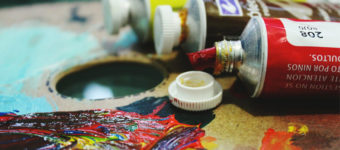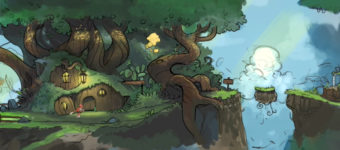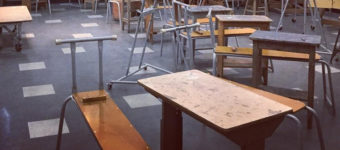
The Best Books For Mastering Life Drawing
The term “life drawing” most often means drawing from the figure. But it can also be a generic term for drawing from life. Both exercises are necessary to improve as an artist and they both incorporate the same techniques.
We recently covered the best books on figure drawing but I want to get broader by looking into books on life drawing. This involves drawing anything from life whether it’s the human figure, an animal, a nearby car, or a park bench.
Life drawing can be quick or meticulous. It can be done in pencil but you can also paint from life once you’re comfortable with color. Lots of options to choose and it can be overwhelming when first getting started.
This post is still pretty large but I’ve tried to narrow the absolute best books for mastering the process of drawing from life.
Keys to Drawing


My absolute favorite recommendation for newer artists is Keys to Drawing by Bert Dodson. The book is fairly lengthy at 224 pages but it covers everything you need to do in order to improve as an artist.
Bert teaches drawing from life in a way that just makes sense. Many people try other books and courses and just can’t seem to understand the process.
Life drawing is very simple once you understand the goals. But in order to do this you need to try new things, fail quite a bit, and learn from your mistakes every day. Keys to Drawing sets you on a path to do this with realistic exercises to guide you along the way.
I can’t think of a better book for beginners that’s as comprehensive and easy to follow as this one.
If you’re trying to improve at drawing from life whether still life work or figure drawing I would highly recommend grabbing a copy of this book.
Life Drawing: How To Portray the Figure with Accuracy and Expression


Robert Barrett is a fine artist who teaches many different life drawing classes. He published a book titled Life Drawing: How To Portray the Figure with Accuracy and Expression which encapsulates his method of teaching.
The book spans 160 pages on how to quickly capture the figure, how to build a construct drawing, how to render, and many other important aspects of life drawing in the figure room.
Later chapters get into much greater detail talking about fabrics, reflected light, and creating a value scale that works from the darkest darks you can see.
This is a very complex guide and while it can be used by beginners it’s not the easiest intro to life drawing. However it can be a great resource for experienced beginners or more intermediate artists.
Bridgman’s Complete Guide to Drawing from Life


In this complete guide you get a combination of six individual Bridgman books aimed to help you learn to draw accurately from life. This collection spans 352 pages and comes with a thick binding to hold all this material.
Bridgman’s Complete Guide to Drawing from Life offers a variety of tips and techniques for drawing from life. It delves right into the process of life drawing and spares no expense on the minutiae.
Since this book is so dense I’d argue it really isn’t great for beginners who have zero understanding of anatomy. You need to understand a bit about what you’re looking at on the human body to get the most out of this book.
It’s very comprehensive but also aimed at intermediate-to-advanced artists who already know a little about what they’re trying to do.
I’d still recommend grabbing a copy if you’re a fan of Bridgman, and if you don’t mind the all-text writing style.
Life Drawing in Charcoal


Rendering in charcoal almost feels like painting because it glides loosely and can get really dark on the paper. It’s often a favorite of artists and Douglas Graves can get you started with his book Life Drawing in Charcoal.
This book just got a new edition released with expanded content totaling 174 pages. Graves teaches you how to see masses and how to render tone right from the start, very much like a painter’s approach.
This strategy ignores constructionist work and moves right into massing objects on the paper.
I have to say this is a unique strategy and it will not be for everyone. But I think it’s a great way for curious artists to learn more about the craft of life drawing. It offers an approach with charcoal that you just can’t get with graphite, and the techniques can be mimicked if you want to move into painting.
Graves also covers more fundamental topics like proportions and keying dark values into the figure drawing. You do need some fundamental knowledge to get deep into this book. But if you want to just get started you can pick up a copy with some charcoal and work through the early exercises with relative ease.
How to Draw What You See


Rudy De Reyna originally published this book in the early 1970s with the goal of teaching life drawing from an easier perspective. It has since been updated a few times and released in a much nicer binding to help artists all over the world.
Renya is a big fan of drawing from life because it’s a necessary skillset to improve in all areas. But this can also be one of the most frustrating parts of learning to draw because the discrepancies are so large.
It’s pretty easy to draw cartoony figures because even if they’re bad they still look OK. But there are some immaculate life drawings out there, so comparing these to your first attempts can be discouraging.
How to Draw What You See is a great book for beginners who have no clue how to approach life drawing. The exercises are very straightforward and if you follow the instructions you’ll get out exactly what you put in.
Just remember that a book cannot make you a better artist. You need to put in the work and do the exercises to see the greatest benefit.
Figure Drawing for Artists: Making Every Mark Count


This is one of the newer books on my list and it’s also one of the most unique in regards to content. Steve Huston is a talented fine artist and his book Figure Drawing for Artists: Making Every Mark Count is incredible.
Steve breaks down his process for life drawing and teaches you how to analyze a figure in the figure room. This starts from rough construct and quickly moves into rendering for greater detail.
The early measurements are often the most important so you’ll get plenty of tips to improve your measurements for accuracy. I’d mostly recommend this to newer artists who want to learn a variety of ways to improve their figure drawing.
Steve’s methods are not the only means of figure drawing. But they can help you think of newer ways to capture the figure with more depth and clarity based on Steve’s unique workflow.
Drawing Masterclass: Life Drawing


While this book is very short at only 96 pages, it also covers a lot of ground for technical figure drawing skills.
Drawing Masterclass: Life Drawing teaches you how to approach figure drawing with charcoal, carbon, graphite, and even pen if you’re inclined to do so.
The author slowly introduces new topics from the first few lines through the gesture and rhythm down into rendering with tone.
Most of these techniques should be obvious if you’ve been in the figure room for a while. But newer artists may enjoy the suggestions and even try them during live figure classes.
Since this book is really small it’s not the best guide to keep by your easel. I’d recommend this more as a quick resource for learning about new figure techniques and learning how to apply them in your own work.
Vilppu Drawing Manual


Ever since I picked up the Vilppu Drawing Manual I’ve gained a newfound respect for Glenn Vilppu. He’s a very talented teacher who runs his own art academy and shares most of these tips in his drawing manual.
This book is published straight from Vilppu and it comes in a spiral binding. It’s 177 pages long and full of great advice for artists trying to learn fundamental figure drawing concepts.
Glenn has a way of teaching that feels direct yet simple. He doesn’t waste time getting into the details, but you’ll also never feel lost going through the exercises. This is why I treasure his drawing manual and it’s why I recommend it so highly to other artists.
If you already have figure experience then this may not help as much.
But for complete beginners this book will help you understand not only the techniques of figure drawing, but also the mindset and methods you need to consider while examining the figure.
Exploring Life Drawing


Harold Stone offers his own illustrations and constructionist diagrams to help you understand the figure and realistic life drawing. His book Exploring Life Drawing is one of the most insightful life drawing books I’ve read.
Each chapter focuses on a different skill and provides very clear step-by-step approaches for you to follow in the figure room. Stone has years of drawing experience and he has waded through a handful of different techniques.
The exercises are crystal clear and super easy to follow on your own. They will not help you improve right away, but with consistent practice you will notice a difference.
I also love how the author compares different types of life drawing, classical and contemporary, offering both approaches for the reader to decide what they like best. In truth you can always practice both so there’s no harm in learning everything.
But with 288 pages there’s a lot of ground to cover so I recommend sticking with each chapter for at least a week and practicing in your own time.
Sketching People: Life Drawing Basics


Lastly we get to a book all about drawing the human figure from life. Sketching People: Life Drawing Basics by Jeff Mellem teaches expression and motion in figure drawing with a practical approach to the exercise.
The early chapters cover gesture and quick sketching but you quickly move into forms and rendering the figure in detail.
Your goal is to capture weight and body language more so than immaculate detail. This isn’t always the purpose behind life drawing. However it is valuable when you need to do quick studies or short poses to capture the model quickly.
I’d only recommend this book to artists who have a bit of figure knowledge on their own and want to mix up their strategies. Mellem teaches quickly so you’ll move through this book in a flash. I think it’s more like a reference guide than a drawing course, but the information is valid and quite useful to aspiring animators and comic artists.
This whole article has a large mix of life drawing books from the figure and still life drawing. The two are very different exercises but they focus on the same fundamental principles.
If you have no idea where to start with life drawing then I’d undoubtedly recommend Keys to Drawing. It offers the easiest introduction for newbies and you’ll walk away with all the techniques you need to measure & capture objects realistically.
From there you can move onto any of the books in this post and see dramatic results. I always encourage artists to move into figure drawing quickly. But still life drawing builds your self-esteem because it’s much easier to capture objects realistically.
Follow whatever path feels right for you and just make sure you’re practicing as often as possible.












